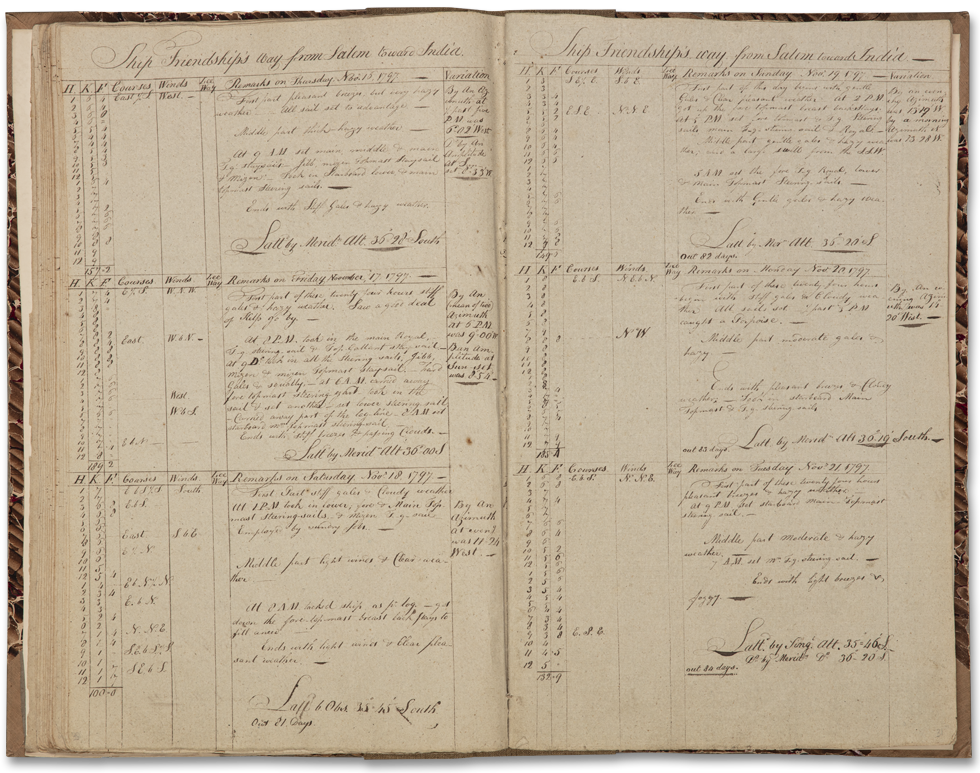What's A Logbook?
![]()

Logbooks are quirky. Days run in 24-hour cycles, starting at “the meridian,” or noon. Logbooks follow a certain form once the vessel is at sea, and they include a number of carefully noted observations:
Column H—Records the hour of observation.
Column K—Records “knots made good,” or the ship’s speed. Think of it as miles per hour, only in nautical miles (one knot = 1 nautical mile = 1 minute of latitude).
Column F—Records fathoms (1 fathom is 6 feet of depth), often used on the open ocean to measure water depth in a given location.
“Courses”—Records the ship’s compass direction. There are 32 points in the compass, each equaling 11¼ degrees of a modern-day compass. This information was tracked by the ship’s helmsman on a log slate and later transferred to the official logbook.
“Winds“—Records the direction from which the wind is blowing.
“Remarks”—This section always begins just after the noon meridian and starts with a comment on the wind and weather. Other things noted are sail changes, unusual course adjustments, soundings, repairs, sightings of vessels or wildlife, and comments on personnel.
“Variation“—This measurement was taken at sunrise or set (“amplitude”) and/or at an hour before sunset or after sunrise (“azimuth“) to detect deviation from true north.